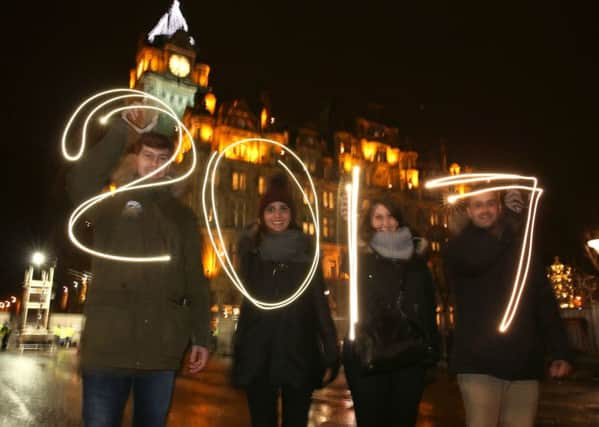10 unusual facts you might not know about Hogmanay in Scotland


1. Many Scots still use Hogmanay to practice the tradition of first footing, when it is customary to visit a friend or neighbour just after midnight to celebrate the New Year. While the traditional gift of a lump of coal for the host’s fire may not be as common as it once was, it’s still bad luck to show up empty handed, so be sure to take along your tipple of choice.
2. Edinburgh’s Hogmanay celebrations were the site of the World Record for the largest ceilidh dance. 1914 people danced Strip The Willow at the ‘Night Afore Fiesta’ on 30 December 2000.
Advertisement
Hide AdAdvertisement
Hide Ad3. Mystery still surrounds the origin of the word ‘Hogmanay’, with old Gaelic, Flemish, and Norman Dutch all being sited as possible influences on the word.
4. A common misconception across the globe is that Auld Lang Syne should be sung with the participant’s hands crossed from the start, but in Scotland it is still customary to join hands normally during the first verse before crossing them for the second.
5. Another common error is that Robert Burns wrote Auld Lang Syne in its entirety, but Burns himself based his version on an older song which was known to exist up to 70 years before his 1788 version.
6. Edinburgh’s famous Hogmanay party has drawn thousands to Princes Street every year since 1992, with headlining music acts and a whole range of festivities. But before the official party was launched, revellers used to gather near the Tron kirk on the Royal Mile to celebrate the bells.
7. For almost 400 years Christmas wasn’t celebrated in Scotland due to the Protestant Reformation. This meant that for many Christmas was just another day at work, and the big celebration would be at the Winter Solstice holiday which became Hogmanay.
8. For the braver souls among us South Queensferry offers the perfect Hogmanay hangover cure: The Loony Douk. On January 1st each year dozens of ‘loonies’ gather next to the First of Forth and take a quick dip in the icy waters.
9. Stonehaven hosts one of Scotland’s most spectacular New Year displays: for nearly a century, residents have been swinging fireballs over their heads, a practice descended from pagan cleansing rituals.
Advertisement
Hide AdAdvertisement
Hide Ad10. Another old Scottish custom is redding. This is the act of cleaning the house before the bells to get the New Year off to a fresh start. In years gone by it was particularly important to ensure that all fires were cleared of ashes so new ones could be started. Juniper was also burned to help ward off any evil spirits that had accumulated throughout the year